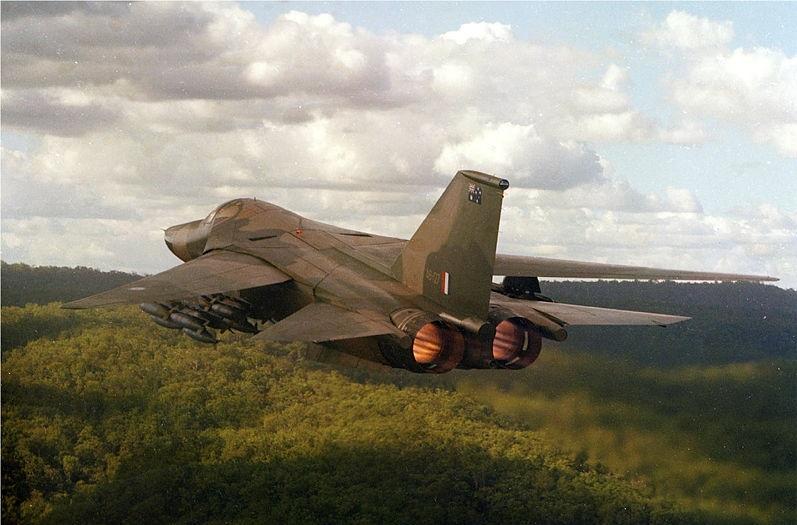
In part 1, I considered the implications of sustaining and upgrading the RAAF’s F/A-18F Super Hornet fleet (alongside the E/A-18G Growler) as an alternative to buying an additional squadron of F-35s. It’s the next big force structure choice for the ADF, as the 2016 defence white paper highlights.
The decision will be made when Defence is deep into its next quadrennial force structure review, which gets underway in 2019. It will also occur in the context of Australia’s worsening strategic outlook, characterised by a rising and assertive China, and uncertainty about the US’s strategic commitment to Asia.
That worsening strategic outlook justifies spending more on defence than was planned in the 2016 white paper. The current target of 2% of GDP should be a mandatory floor, rather than an aspirational ceiling; ASPI’s Peter Jennings has suggested 2.5 or 3% as the new target.
The RAAF’s lack of a long-range strike capability is a curious oversight in the white paper. Australia, as a key partner to the US (and increasingly to regional powers such as Japan, and our Southeast Asian neighbours) can’t simply coast along in a ‘defence of Australia’ mode, ignoring any developments beyond the archipelago to our north.
Certainly future naval capability, specifically the Shortfin Barracuda submarines, will allow a degree of power projection. But the first of those won’t appear until 2032, and we won’t have five boats until the 2040s, which is far too slow given the rapid changes in our region.
The F/A-18F and F-35, and the E/A-18G Growler, are all short- to medium-range tactical fighters that depend on tanker support to reach areas such as the South China Sea or key Southeast Asian straits. That places a lot of critical combat enablers in harm’s way, vulnerable to China’s long-range air combat capabilities, which in the future could operate from bases in the South China Sea.
How to fix this dilemma?
One option is to get longer-range platforms. The RAAF lost its long-range strike capability with the retirement of the F-111 in 2010. Beyond the option of investing in very expensive strategic bomber-type platforms, there’s simply nothing flying or in advanced development that would offer similar capability to the F-111.
The other option is to invest in long-range standoff weapons, including air- and sea-launched land-attack cruise missiles and anti-ship weapons.
As I’ve noted, missile systems such as LRASM (long-range anti-ship missile) and JASSM-ER (joint air-to-surface standoff missile—extended range) could be used by both the F-35 and Super Hornet, and would restore some of the long-range strike capability lost with the F-111. That could be matched by Tomahawk cruise missiles on the navy’s Hobart-class destroyers and Hunter-class future frigates. It would be a relatively straightforward integration process that could be bought off the shelf through the US foreign military sales program. There would be no need to slow things down and drive up costs by attempting to Australianise the capability or build locally.
LRASM and JASSM-ER add extra strike reach to the F-35 and F/A-18F, but their ranges, while considerably longer than that of the planned Kongsberg joint strike missile, still demand tanker support and preferably access to host bases.
Establishing that host base access is an option Australia could consider. We already have access to the Butterworth base in Malaysia, but we could seek new arrangements in the region to open up access in a crisis. Closer cooperation between the RAAF and the Indonesian Air Force, for example, should be explored in areas where both countries can benefit from mutual access to bases, shared intelligence and training.
As an alternative to acquiring a long-range strike capability, we might put more effort into developing penetrative ISR (intelligence, surveillance and reconnaissance) to identify targets that the US or our other partners could strike in a crisis. That could involve a bigger investment in space capabilities and high-altitude unmanned systems, including those capable of operating in contested airspace, to cue coalition forces equipped with long-range standoff weapons.
Two other factors suggest that it may be prudent to hold off on acquiring a long-range strike capability. First, there’s the question of weight of attack. Our limited numbers of platforms—be they ships or submarines or aircraft—constrain our ability to deliver decisive blows against an opponent. Second, the future might belong to supersonic, and ultimately, hypersonic strike missiles. Contemporary standoff weapons are all subsonic, and the Tomahawk isn’t even that stealthy, increasing the risk it can be intercepted by sophisticated ground defences. It might be better to wait for a technology like hypersonics to mature before investing in a new capability.
Finally, we have to think about AI and its use to create ‘intelligent weapons’. Unlike our authoritarian adversaries, Australia can’t ignore constraints on the use of lethal autonomous weapons. But AI may enable ‘brilliant’ or intelligent weapons to mitigate risks posed by enemy ground defences. Combined with hypersonics, the stealthy, fast, intelligent standoff weapon—with human oversight—that could appear in the 2020s might be more suitable for Australia’s needs than quick investment in existing technology now.
In the third part of this series, I’ll consider where to take our air combat capabilities. Does the future lie with a 5.5 or 6th generation aircraft, or will it be more about manned–unmanned teaming?